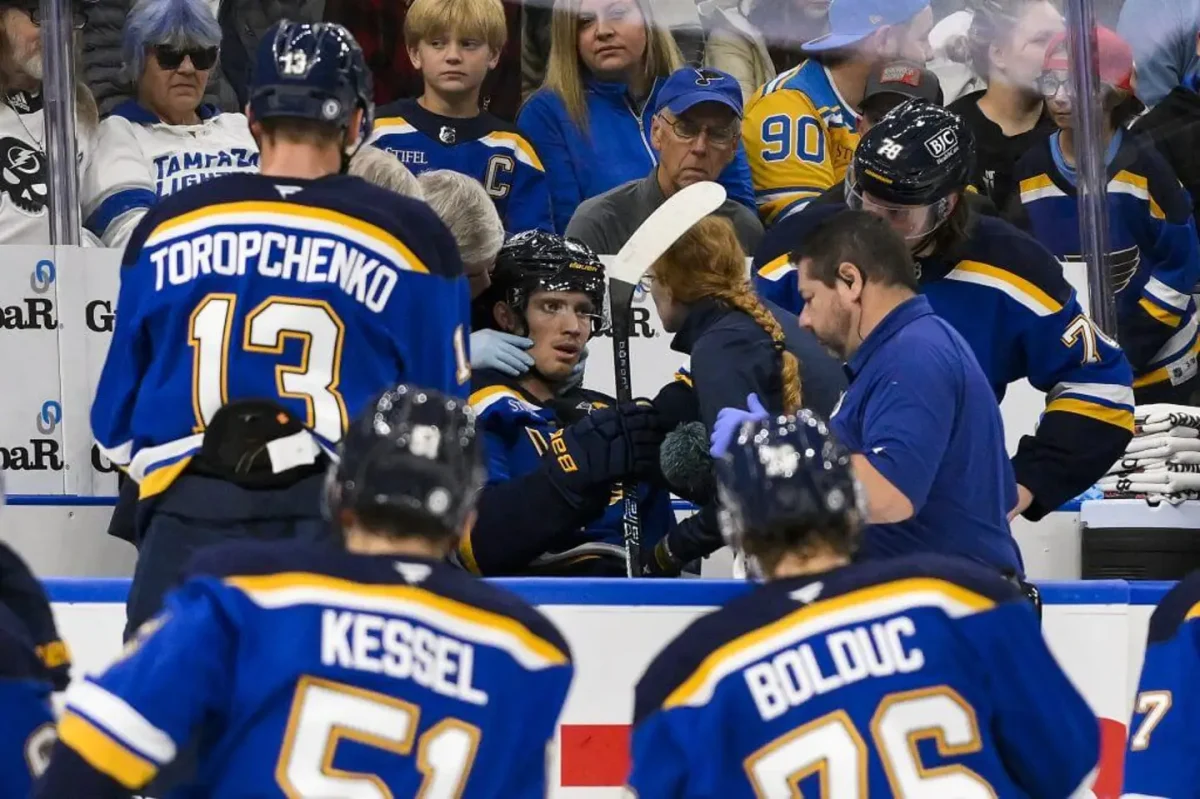St. Louis Blues center Dylan Holloway was stretchered off the ice after an errant shot from Tampa Bay Lightning left winger Nick Paul hit him in the neck on Nov. 5.
Holloway finished his shift, but he soon became motionless on the bench as head athletic trainer Ray Barile held his neck.
Though Holloway is now alright and played nearly 18 minutes in St. Louis’s Nov. 7 loss, this injury came at a time of great polarity in the hockey world.
Last year, former Penguins forward Adam Johnson died after a freak accident in which opposing player Matt Petgrave’s left skate lacerated his neck.
In 2022, Teddy Balkind, a sophomore in high school, died after his neck was accidentally stepped on during a junior varsity game.
With these two incidents, USA Hockey — in typical fashion — grudgingly created a mandate on neck protection. However, this mandate does not cover certain junior leagues, the NCAA or the NHL.
For an organization that makes players take hours of modules on sexual assault and hazing before each season, and sign numerous waivers, one would hope that they’d be more in tune with protecting the safety of their players.
Unfortunately not.
A typical youth hockey game today is faster than an NHL game 50 years ago. Now, with the ability to swap the blades of skates in just seconds, skates maintain their sharpness over the course of a game. As fatigue sets in and players begin to make lazier plays … you get the idea.
In the Eastern Hockey League, an unsanctioned junior league, players are not required to wear neck protection, nor are they required to wear a cage. Last year, in this league, I watched our captain catch an elbow up high during practice before pulling a tooth out and skating toward the bench.
Two weeks later, one of our defensemen lost three teeth after a shot caught him in the jaw. Hearing him screaming, blood dripping from his mouth, made me question if we’d learned anything after Johnson’s death — which had occurred just days before this incident.
We hadn’t. We likely never will.
And as for that player, he was on the ice two days later, with the same half-shield on.
In essence, what used to be considered a freak accident is now considered almost commonplace in the hockey world.
Like many athletes, hockey players are creatures of habit. Sidney Crosby wears the same jock from juniors. Ryan Reaves still wears a helmet without a visor. Erik Karlsson eats a chicken breast slathered in ranch, pasta alfredo with meat sauce, raw onion and ketchup before every game.
With the NHL demanding 82-game regular season schedule, players’ routines give them a sense of consistency throughout the year, which is largely why so few of them have adapted to wearing neck protection — even after Holloway’s incident.
Regardless, NHL players are adults and thus should have the ability to make their own decisions about neck protection. If they want to risk their lives because neck protection is uncomfortable, then so be it.
But for these junior leagues, like the Eastern Hockey League, which as of 2024, has a 15-year-old, two 16-year-olds and a multitude of 17-year-old players, neck protection and full cages should be mandatory.
The hockey community needs to stop mourning the death of a player every few years, especially when they are preventable.
The answer is clear — NHL players, it’s your prerogative. Junior and NCAA players, get used to it.

























































































































